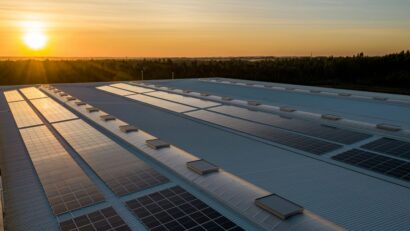
From coal to solar and wind power plants: Towards a renewable energy production in India, Pennsylvania, and the Philippines
The transition to renewable energy production must be tackled globally. Three examples from India, the US state of Pennsylvania and the Philippines show that climate-friendly power generation can succeed. They are leaving coal behind them and are building large solar and wind power plants. This is because coal, oil and gas are fossil fuels that are extremely harmful to the climate. To combat the climate crisis, we need to be replace them with renewable energy sources.
Renewable energy in India: the world’s largest solar park
The world’s largest solar and wind power plant is being built in a barren salt desert in western India. Once completed in 5 years, it will supply around 16 million Indian households with electricity from renewable sources. The construction of this park will cost 20 billion dollars. The park will be one of the most important and largest clean energy sources in the world. The company behind the project is AGEL (Adani Green Energy Limited), which once made its fortune with coal and is now turning to renewable energy production.
“A region so large, a region that is so unencumbered, there’s no wildlife, there’s no vegetation, there’s no habitation. There is no better alternative use of that land,” said the managing director Adani about the site in the middle of a salt desert.
India spends 100 billion US dollars on the transition to renewable energy
With the huge solar and wind farm India wants to make its own energy policy fit for the future. The power plant is intended to reduce environmental pollution, achieve climate goals, and meet energy requirements at the same time. After all, India is not only one of the countries with the highest population in the world, but also one of the fastest growing economies. The demand for electricity is correspondingly high. Until now, 70% of India’s electricity has been generated by coal. But that is now set to change. The company is planning to invest 100 billion US dollars in the transition to renewable energy in India over the next decade, with 70% of the investment earmarked for clean energy.
After all, if India were to fall back on fossil fuels, the consequences the climate crisis would be catastrophic. Not only globally, but also for its own country. This is because India – like other South Asian countries – is repeatedly overwhelmed by extreme heatwaves. These heatwaves have led to power cuts, extreme air pollution and increased glacial melting in the north of the country. Since 1992, more than 24,000 people have died from heatwaves in India.
Pennsylvania replaces its largest coal-fired power station with a solar farm
Pennsylvania closed one of its largest coal-fired power stations in June 2023 and is now building a huge – 2,700-hectare – solar farm instead. The solar farm will be built in close proximity to the old power station to prevent further damaging of the environment. Once the plant is up and running, it will supply 75,000 households with green electricity. The costs amount to 90 million US dollars. The Mineral Basin Solar Project fills a critical gap in power generation and creates 750 new jobs. The plant is expected to be completed in 2026.
A gigantic solar park like this is being build in Pennsylvania. (Unsplash: Nuno Marques)
A huge photovoltaic park in the Philippines
Ambitions are also high in the Philippines when it comes to switching to solar and wind energy: With around 5 million solar panels on 3,500 hectares, the energy company SPNEC (Solar Philippines New Energy Corporation) planes to build one of the biggest solar parks in the world – probably even larger than the one in India. The park will go into operation in 2026. If the project succeeds a large proportion of the Philippines’ energy requirements will be covered by renewable energies.
Unlike in India or Pennsylvania, the solar park in the Philippines is being built on a large area of forest. This is of course problematic. It further destroys the habitat of animals and plants. Experience has shown that this has a negative impact on local biodiversity. However, this diversity is essential for maintaining a balanced ecosystem.
Climate-friendly power generation: Away from coal and gas
Scientists have agreed for a long time that we can only stop the climate crisis if we replace environmentally harmful energy sources with renewables. This means moving away from gas and coal and towards wind, water and solar energy. Many countries and regions now have realized this: The global output of wind energy, for example, doubled between 2014 and 2020. India, Pennsylvania, and the Philippines are all taking a step towards renewable energy and are examples of how future energy needs can be met in a climate-friendly way.
This work is licensed under the Creative Common License. It can be republished for free, either translated or in the original language. In both cases, please cite Kontrast / Kontrast Redaktion as the original source/author and set a link to this article on Scoop.me. https://thebetter.news/renewable-energy-india-pennsylvania-and-the-philippines/
The rights to the content remain with the original publisher. Läs mer…

